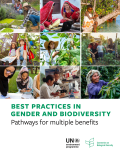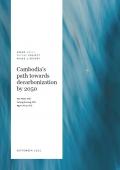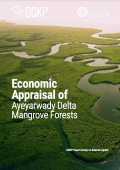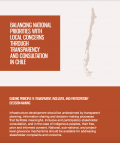The Value of Landscape Restoration in Uzbekistan to Reduce Sand and Dust Storms from the Aral Seabed

This study aims to provide an economic analysis of the benefits of afforestation of the former Aral Seabed in Uzbekistan.

This report presents a collection of case studies and best practices for achieving sustainable and transformative results for biodiversity.

This case study has been developed through a synthesis of existing research and knowledge in Cambodia to build the economic and technical case for decarbonization.

This case study reports on the decarbonization efforts of Lao PDR, as well as an analysis on the opportunities and challenges in implementation of its nationally determined contributions.

This case study summarizes Malaysia's energy, transportation, manufacturing and construction, oil and gas, waste, agriculture, forestry industries' decarbonization efforts.

This insight brief provides a comprehensive overview of the commercialization of aquaculture farmed products and the production practices within the mangrove landscapes in the Ayeyarwady region of Myanmar.

This insight brief serves to provide a comprehensive overview of the commercialization of nipa palm products and the production practices within the mangrove landscapes in the Ayeyarwady region of Myanmar.

This report showcases the results of piloting the 3Returns Framework in the coastal ecosystem restoration of mangrove forests in the Ayeyarwady Delta and how green growth alternatives can enhance the well-being of communities.

Chile has established large national parks and other protected areas and has increasingly incorporated different dimensions of sustainability into public policy. The country is home to nine indigenous groups: Aymara, Atacameño, Quechua, Diaguita, Kolla, Rapa Nui, Mapuche, Kawéskar and Yagán, and the regions they inhabit often lie hundreds of kilometres...

This study utilizes an innovative integrated economic and environmental model (IEEM) coupled with land use land cover (LULC), and ecosystem service models (IEEM+ESM) to understand how various policy interventions could affect economic, poverty amelioration and environmental outcomes in Rwanda.
